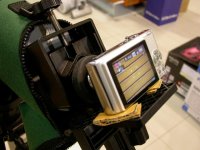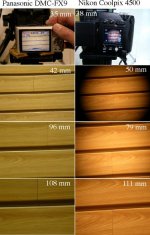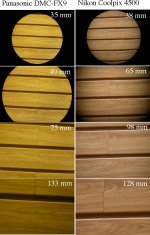Hi all,
I have made some side-by-side tests with the new Panasonic and my aging CP4500 and I have to say that I'm very impressed with the 6Mpix FX9. Yes, it is only a pocket-size, all-automatic point-and-shoot camera, but it does perform very well in digiscoping (inside a store ).
).
+ It has optical image-stabilization, which WORKS even with the scope. It corresponds at least 2 stops - probably more. Godsend to handhold-digiscopers.
+ It has a VERY short shutter-lag.
+ It focuses rapidly and accurately.
+ It has a very good battery life.
Of course there are some shortcomings, but all the above mentioned are so important that I am willing to forgive some manual controls and sensor noise at high ISOs.
I will post some nice pictures of wood panels tomorrow... :'D
Regards,
Ilkka
I have made some side-by-side tests with the new Panasonic and my aging CP4500 and I have to say that I'm very impressed with the 6Mpix FX9. Yes, it is only a pocket-size, all-automatic point-and-shoot camera, but it does perform very well in digiscoping (inside a store
+ It has optical image-stabilization, which WORKS even with the scope. It corresponds at least 2 stops - probably more. Godsend to handhold-digiscopers.
+ It has a VERY short shutter-lag.
+ It focuses rapidly and accurately.
+ It has a very good battery life.
Of course there are some shortcomings, but all the above mentioned are so important that I am willing to forgive some manual controls and sensor noise at high ISOs.
I will post some nice pictures of wood panels tomorrow... :'D
Regards,
Ilkka






